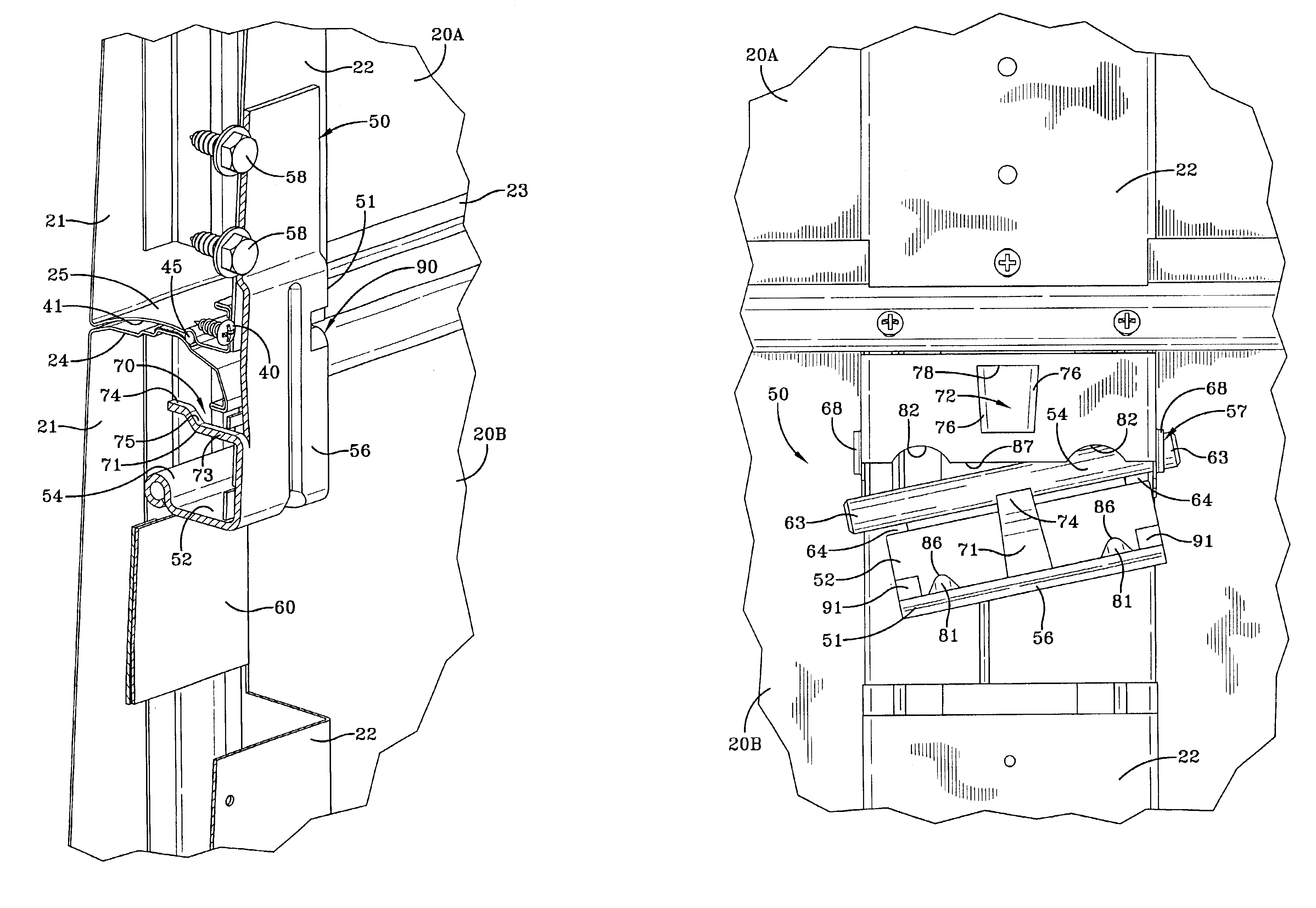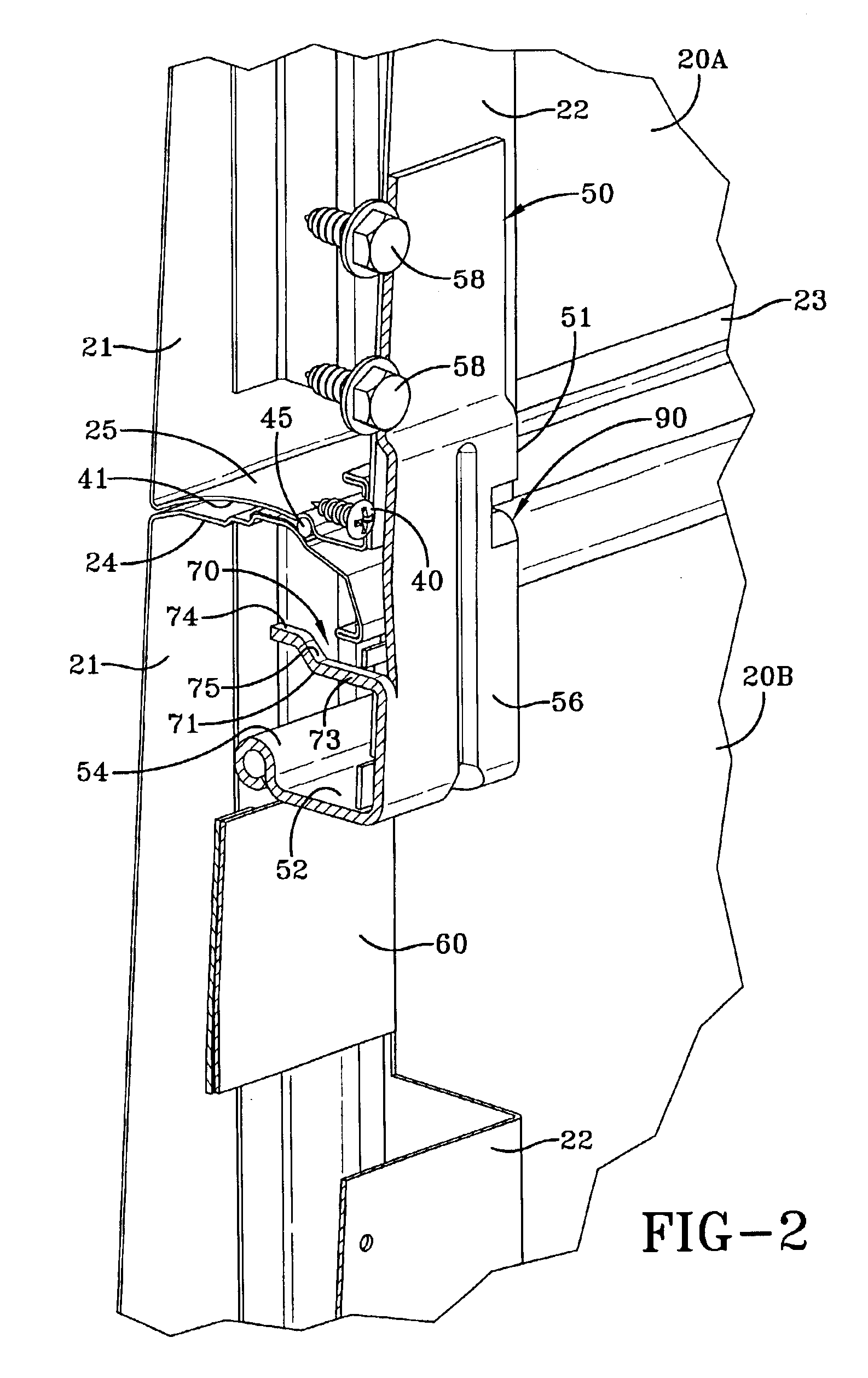Sectional door with self-aligning hinges and method of assembly
a self-aligning, hinge technology, applied in the direction of door/window protective devices, wing accessories, manufacturing tools, etc., can solve the problems of affecting the ability to open or close the members, the hinges of living hinges tend to experience fatigue failure when used, and the hinges of multi-panel garage doors, which have presented pinching hazards at the junctur
- Summary
- Abstract
- Description
- Claims
- Application Information
AI Technical Summary
Benefits of technology
Problems solved by technology
Method used
Image
Examples
Embodiment Construction
A door system according to the concepts of the present invention is generally indicated by numeral 10 in FIG. 1 of the drawings. Door system 10 includes a door, generally indicated at D, located within an opening 11 defined by a frame 12. Frame 12 includes a pair of spaced, vertical jambs 13 interconnected by a header 14 at their vertical upper extremity. Tracks, generally indicated by the numeral 15, are supported on frame 12 and guide the door D from a generally vertical closed position (FIG. 1) to a generally horizontal open position (not shown). To that end, each track 15 includes an upstanding vertical portion 16 supported on a jamb 13 and a generally horizontal portion 17 connected to the upstanding vertical portion 16 by an arcuate transition portion 18. To facilitate moving the door along the tracks 15, a counterbalance system, generally indicated by the numeral 19, may be employed and attached to the header 14. Since such counterbalance systems 19 are commonly used througho...
PUM
 Login to View More
Login to View More Abstract
Description
Claims
Application Information
 Login to View More
Login to View More - R&D
- Intellectual Property
- Life Sciences
- Materials
- Tech Scout
- Unparalleled Data Quality
- Higher Quality Content
- 60% Fewer Hallucinations
Browse by: Latest US Patents, China's latest patents, Technical Efficacy Thesaurus, Application Domain, Technology Topic, Popular Technical Reports.
© 2025 PatSnap. All rights reserved.Legal|Privacy policy|Modern Slavery Act Transparency Statement|Sitemap|About US| Contact US: help@patsnap.com



